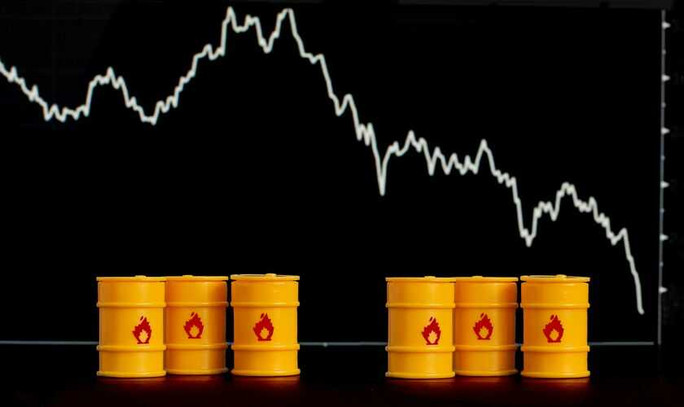Oil represents one of the top global commodities that may be traded on global commodity markets, while at the same time, it’s a fossil fuel for the production of different products like fuels (diesel, gasoline), plastics, fertilizers, or even some kinds of medical drugs.
Thanks to its wide use, oil has a significant impact on the day-to-day activities of the population all around the world, so it’s closely monitored by both, top economists as well as different companies and traders.
Long-term impacts of oil prices:
- A decrease in oil prices often increases the availability of products, stimulating the economy growth
- A rise in oil prices increases the costs of oil products, thus slowing down the growth of an economy, and in a worst-case, even decreasing economic output.
Factors affecting the prices of oil
- Size of oil demand and supply
- Subsidies to oil companies
- International agreements
- Stance and policies of oil-producing companies
- Use of alternative resources
- The geopolitical situation in the areas where oil is drilled (instability often increases the price of oil)
Monitoring oil supply
Unfortunately, oil belongs to precious commodities, so its occurrence in nature is markedly limited. Now, oil is drilled in ca hundreds of countries in the world, however, almost half of the global supply is drilled in just five of them. High concentration within the territory of certain countries provides such countries the opportunity to control the global supply of oil as well as its prices.
- Explanation: Countries (5 countries above or organisations, as e.g. OPEC) may initiate an oil production decrease, thus halting the price drop and at the same time, they may increase prices of oil artificially while stopping it at the moment when the prices are, according to their opinion, adequate, so they can increase production to achieve better evaluation.
Oil demand
As in the case of other commodities and different products, oil demand rises also in case when the global economy is growing. This is all related to the fact that the population is willing to buy, pushing the production higher (including oil prices – e.g. plastics), thus increasing the need for transportation of the respective goods at the same time (higher demand for fuels). Conversely, a weakening economy decreases the demand for oil.
Potential methods of trading crude oil “CFDs”
Technical analysis
In the case of a number of instruments, technical analysis tends to represent a powerful tool to achieve interesting results in markets. Usually, this kind of analysis works the best for markets when the price development of the instrument is not manipulated artificially by the involved players.
Unfortunately, as stated above, oil is the commodity where its producers, if necessary, may affect its value. For this reason, trading oil by using technical analysis solely may represent a relatively difficult task, but not an impossible one.
Fundamental analysis
This kind of analysis represents a very good assistant for trading oil, and you are able to achieve interesting results with it. In particular the news, related to oil in any way, may affect future price development significantly. News about unexpected events tend to have the top impact on oil price developments.
- An exemplary case here may be the weekend attack on oil fields in Saudi Arabia (14. 09. 2019) resulting in a significant gap on Monday when the exchange opened with oil prices higher by more than 10%. Despite the fact that after the opening of commodity exchange such an attack was reflected in the price of oil markedly, oil prices continued to grow, extending its gains from the opening price.
Conclusion
Making a short conclusion from the above, we see that commodities belong to one of the most complex trading instruments, and appropriate knowledge of their algorithm is usually the factor making the difference between successful traders and those who have not achieved it yet.
If you would like to try out oil trading or trading of any other instruments on your own with top tier trading conditions and a professional forex broker, don’t hesitate and try our demo account that may be open on our website completely for free and free of any risk: www.purple-trading.com
We wish you many profitable trades!
About the Author

Team Purple Trading
Purple Trading is a true and 100% fair ECN / STP forex broker providing direct access to the real market. High speed orders execution, no trade-offs, no limits for any type of trading, the most advanced trading technologies. Explore more about Purple Trading at www.purple-trading.com .
CFDs are complex instruments, carrying a high level of risk of losing the entire investment as a result of leverage. 70.5% of retail investors lose their capital when trading CFDs with this provider.
(This value was set within the period from April 1, 2018, to March 31, 2019. You should carefully consider if you understand how CFD instruments work and if you can undertake such high risk of losing you initial investment.
Trading forex exchange with margin carries a high level of risk and may not be suitable for all investors. The high degree of leverage can work against you as well as for you. Before deciding to trade foreign exchange, you should carefully consider your investment objectives, level of experience, and risk appetite. You could lose part or all of your initial investment and therefore you should not invest money that you cannot afford to lose. Seek independent advice if you have any doubts.
Any opinions, news, research, analysis, prices, or other information contained on this website is provided as general market commentary, and does not constitute investment advice. L.F. Investment Limited will not accept liability for any loss or damage, including without limitation to, any loss of profit, which may arise directly or indirectly from use of or reliance on such information.
Purple Trading is a trade name owned and operated by L.F. Investment Limited., a licensed Cyprus Investment Firm regulated by the CySEC lic. no. 271/15.





